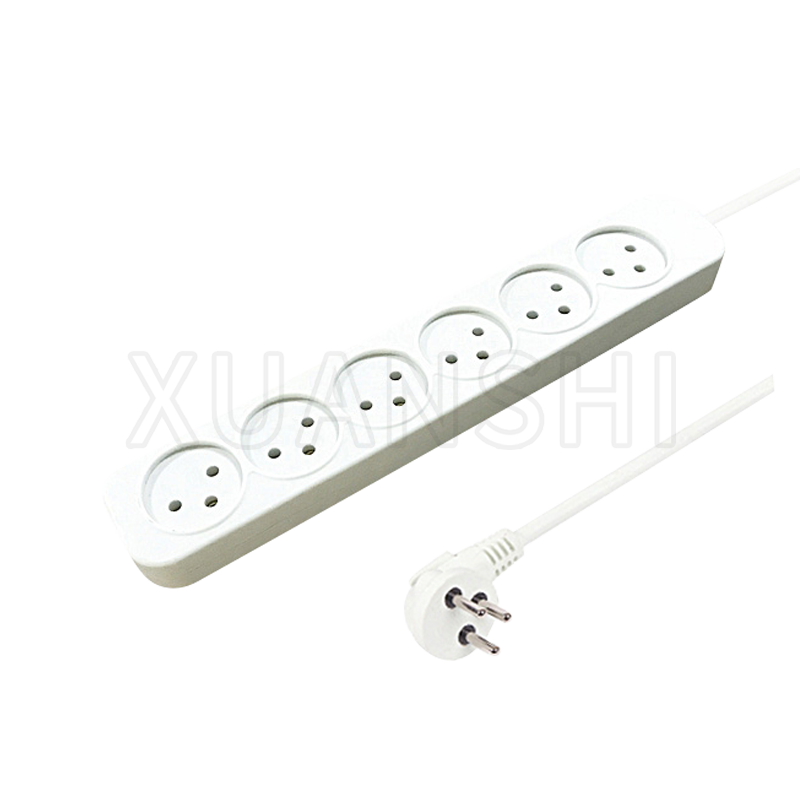A 6-way power strip is designed to handle a mix of high and low wattage devices simultaneously by distributing the electrical load among its multiple outlets. Here's how it generally works:
1.Total Load Capacity:
Each 6 way power strip has a maximum total load capacity, which represents the combined wattage of all devices connected to it. This capacity is determined by the power strip's internal components, such as the gauge of its wiring and the quality of its materials. Manufacturers design power strips to safely handle a certain amount of electrical power without causing issues like overheating or electrical fires.
2.Individual Outlet Rating:
Within the power strip, each individual outlet has its own rating for maximum load. This rating is usually expressed in watts or amps and indicates the highest amount of power that the outlet can safely provide. These ratings consider the outlet's wiring, contacts, and design. It's crucial to adhere to these ratings to prevent overloading a specific outlet and causing potential damage.
3.Balancing Load:
The key to using a mix of high and low wattage devices is to distribute the load evenly across the power strip's outlets. By doing so, you prevent any single outlet from becoming overloaded while ensuring efficient use of available capacity. For instance, you might plug a high-power computer into one outlet, a low-power desk lamp into another, and so on.
4.Using Available Outlets:
When you have devices with varying power requirements, consider the individual outlet ratings. If you have devices that require a higher wattage, connect them to outlets with higher ratings. This prevents overloading outlets with lower ratings and maintains a balanced distribution of power usage.
5.Safety Features:
To prevent overloading and potential hazards, modern power strips are often equipped with safety features like overload protection and circuit breakers. If the combined load across all outlets approaches or exceeds the power strip's capacity, these features will trigger. The circuit breaker will trip, cutting off power to the strip and devices, effectively preventing damage or risks of overheating.
6.High-Power Devices:
When connecting high-power devices, it's wise to distribute them across multiple outlets rather than concentrating them in one area of the power strip. This prevents overloading a single outlet and helps distribute the load more evenly across the strip.
7.Monitoring Load:
Some power strips have indicators that visually or audibly signal the load status. This feature lets you monitor the current usage and adjust device connections if needed. If you notice the strip is nearing its capacity, it's a sign to redistribute devices or consider a higher-capacity power strip.
8.Reading Manufacturer Guidelines:
Always refer to the manufacturer's guidelines and specifications for your specific power strip model. The manufacturer provides information on the power strip's total load capacity, individual outlet ratings, and usage recommendations. Following these guidelines ensures safe and effective use of the power strip.
Model: JL-10A,XS-XB6
Input Voltage and Current: 16A/250V AC
Wiring: H05VV-F 3G1.5mm²
Exterior Color: White
